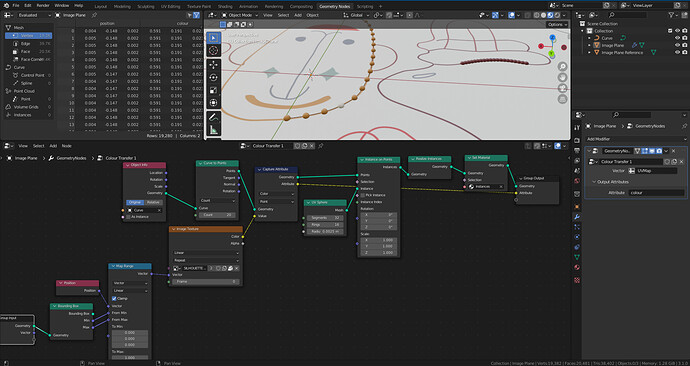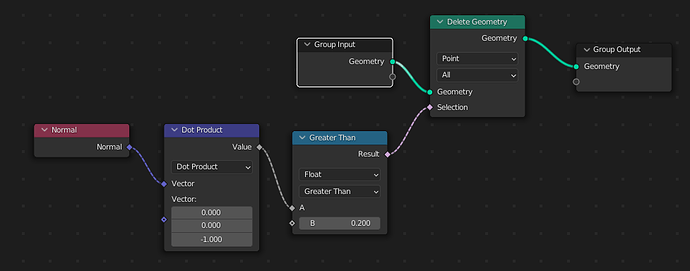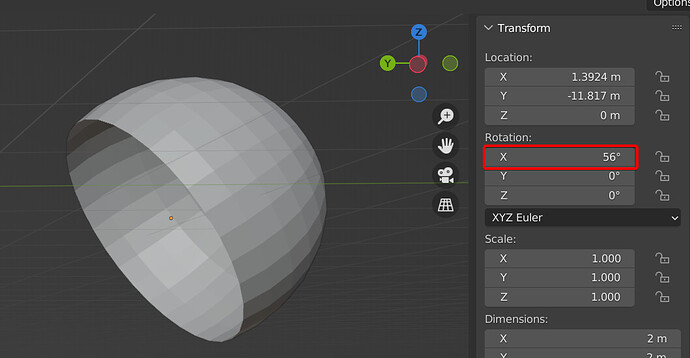Perfecto!!. It works. Thanks a ton 
Yep, just like that! For more info:
-
Multiply will scale each axis by the second vector.
-
‘Scale’ works like multiply, but multiplies everything by one float. It’s the equivalent of putting the same value into all axes of a multiply node.
-
‘Add’ can transform your texture.
-
You can use the ‘vector rotate’ node to rotate a texture.
Noted. Thanks a ton mate :+1
Hey folks, I’m wondering. Is there a way I can get a different ID for each individual spline? I realize most methods of creating splines allow the user to capture an integer attribute and use it later on (for instance, capture instance index after instancing on points, then use later after having realized instances) but it seems weird that there is no “spline index” in the same way there is a “mesh island index”.
The index node works as a catch all for basic domains. You just have to capture it with the domain set to spline.
Mesh islands are not attribute domains in and of themselves, so the index is stored arbitrarily.
Thanks a lot ! that makes sense.
Have you tried realising the instances? It will be helpful if you could provide a .blend file.
Yes, after realising instances I get a colour other than just black, but it is a seemingly random shade that doesn’t correspond to the colour of the image, and it is the same for every instance. I’ve made a simplified .blend file like you suggested. There are two geo node networks, one to transfer the colour from the plane to the curve’s points, and the other to instance on those points and set the material. The reasoning behind this is so that the colour is transferred to the curve’s points and then every point of each instance inherits the colour attribute of the curve point on which the instance is created (so each sphere is only one colour). Thanks for your help 
Colour Transfer Issue.blend (3.3 MB)
It’s not working because its transferring color just from a single face, if you want this method to work, the plane has to be subdivided really densely to show those small lines.
Here is different method by matching UV coordinates from a plane, so texture can be directly sample to curve points
Edit:
You can also just transfer plane UV coordinates to curve points
I could really use a 30 minute long youtube video explaining this in depth.
Thank you so much! These are both great methods, really helpful.
I’m trying to delete faces that are facing down, the problem is that everything is done in object-space and if I rotate the object, then it doesn’t work anymore. Note that for technical reasons I can’t use the Object info node rotation. Is there a way to get this to work in World space?
use the normals of a face of a object *
So the only solution is to query the information from the face of another object using an Object input? That’s… tedious?
Use an Empty in relative mode,
…or if you really can’t use object info (?), then don’t transform in the viewport, use a transform node instead.
Good luck.
The transform is done in Unreal, I was hoping to find a way to fix it in the node graph itself, but it looks like it will require a fix in AlterMesh to not freeze the object rotation.
You can have the original object in the object info node, then you can get the object’s rotation to rotate the world vector without an intermediate object.
It’s a bit cumbersome too but maybe a bit better.
Thanks, this is how I would do it in Blender, but I wanted to know another way because the Object rotation is not working with Altermesh. The dev is most likely going to fix it.
No experience with AlterMesh, but are node-groups inputs exposed? If so you could try just transform from the input instead?:
Good luck.
I initially thought I would have to type the Rotation manually for every object on the Actor in Unreal.
But the creator of AlterMesh gave me a solution, you can run Construction Scripts on the Blueprint AlterMesh actor, so I can set that Rotation parameter before it imports it to Blender to run the geometry nodes!
It would be nice to have a World vector though.





